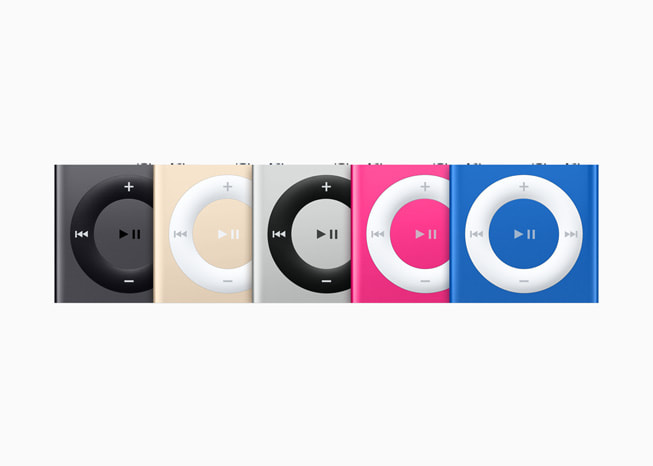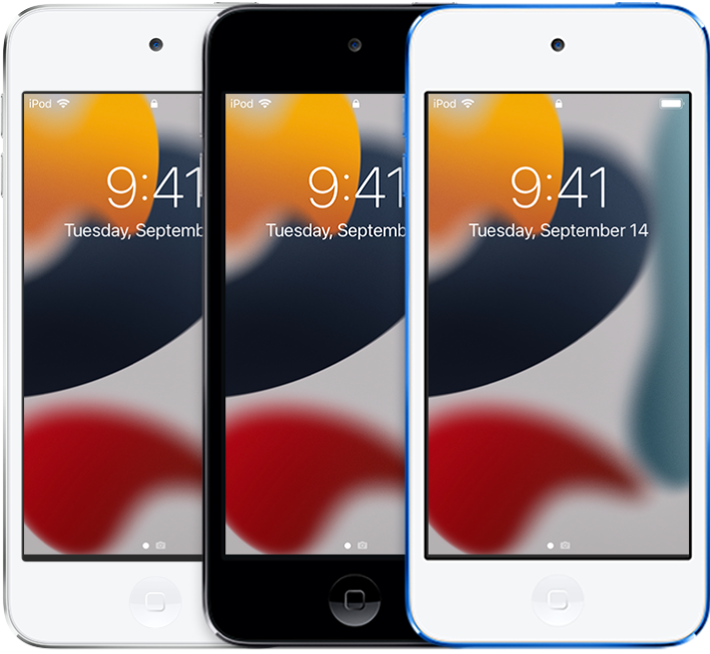The Unlikely Comeback: Why a 20-Year-Old Music Player is Captivating a New Generation
In an era dominated by the relentless stream of notifications and the all-encompassing functionality of the smartphone, a surprising trend is taking root: the revival of the Apple iPod. Once the undisputed king of digital music, the iPod was largely relegated to the annals of tech history, a fond memory of white earbuds and the satisfying click of a scroll wheel. Yet, today, a vibrant community of enthusiasts, audiophiles, and digital minimalists is breathing new life into these iconic devices. This resurgence, a key topic in recent iPod revival news, is far more than a simple wave of nostalgia. It represents a deliberate choice—a rebellion against algorithmic playlists, a quest for superior audio fidelity, and a desire to reclaim a tangible connection with personally curated music libraries. This article delves into the technical, cultural, and practical aspects of the iPod’s second act, exploring why it’s happening now, how classic hardware is being transformed with modern technology, and what its place is within the sprawling, contemporary Apple ecosystem news landscape.
Section 1: The Anatomy of a Revival – Key Drivers and Motivations
The iPod’s return to relevance isn’t a singular event but a confluence of several powerful cultural and technological trends. Understanding these drivers is key to appreciating why a device without an internet connection or an app store is finding a dedicated audience in the 2020s. From a desire for focused listening to the tangible joy of hardware modification, the “why” is as compelling as the “how.”
The Digital Detox and Single-Purpose Devices
One of the most significant factors fueling the iPod revival is the growing movement towards digital minimalism. The modern smartphone, while a marvel of engineering, is also a primary source of distraction. Constant notifications from social media, email, and messaging apps fragment our attention. The iPod, in stark contrast, does one thing exceptionally well: it plays music. For users seeking a focused experience—whether during a workout, a commute, or a deep work session—the iPod offers a sanctuary. It allows for intentional engagement with music without the risk of being pulled into a vortex of digital noise. This trend towards mindful technology use echoes conversations in Apple health news, where digital well-being is becoming a prominent feature, yet the iPod achieves it through hardware limitation rather than software controls like Screen Time.
The Pursuit of High-Fidelity Audio
While streaming services offer unparalleled convenience, they often come at the cost of audio quality. Most platforms use lossy compression (like AAC or Ogg Vorbis at bitrates around 256-320 kbps) to save bandwidth. For discerning listeners and audiophiles, this is a significant compromise. A revived iPod Classic, particularly one upgraded with modern flash storage, can hold vast libraries of lossless audio files (like ALAC or FLAC), which offer CD-quality (1411 kbps) or better sound. When paired with high-end headphones, such as the AirPods Max, the difference is palpable. This focus on pure audio quality positions the iPod as a serious piece of audiophile gear, a stark contrast to the convenience-first approach of streaming from an iPhone or Apple Watch.
Ownership and Curation in the Age of Streaming
The subscription model has fundamentally changed our relationship with media. With services like Apple Music, we rent access to millions of songs but own none of them. An artist can pull their catalog, a license can expire, or a service can shut down, and “your” music disappears. The iPod represents a return to ownership. The act of sourcing, purchasing, and organizing digital audio files into a personal library is a deliberate, curatorial process. This physical collection, housed on a dedicated device, offers a sense of permanence and personality that ephemeral streaming playlists cannot replicate. It’s a tangible archive of one’s musical journey, a concept that feels almost radical today.
Section 2: Modernizing a Classic – A Technical Deep Dive into iPod Modding

The iPod revival is not just about using old technology; it’s about augmenting it with modern components to create a device that surpasses its original capabilities. A thriving online community has developed a sophisticated ecosystem of parts and software, turning vintage iPods into bespoke, high-performance music players. This is where the real technical magic happens.
Storage Overhaul: From Spinning Platters to Solid-State
The single most transformative upgrade for a classic iPod is replacing its original, mechanical hard disk drive (HDD). These drives were prone to failure from drops and had limited capacity. The modern solution involves using an adapter, such as the popular iFlash board, which allows users to install SD or mSATA SSD storage. This upgrade provides several key benefits:
- Massive Capacity: While the original iPod Classic maxed out at 160GB, modders are now building iPods with 1TB or even 2TB of storage, capable of holding tens of thousands of lossless audio tracks.
- Enhanced Durability: Flash storage has no moving parts, making the iPod vastly more resilient to shocks and drops.
- Improved Performance: Navigating large libraries is faster and more responsive. More importantly, the power consumption is significantly lower.
This core modification is central to the iPod Classic news and iPod Mini news communities, turning these devices from fragile relics into robust daily drivers.
Extending Life: Battery and Haptic Upgrades
After nearly two decades, original iPod batteries are often depleted. Fortunately, replacing them is a straightforward process, and many aftermarket suppliers offer higher-capacity cells than the originals. A flash-modded iPod with a new, larger battery can achieve staggering battery life, sometimes lasting for over 50 hours of continuous playback. More advanced mods even involve integrating a Taptic Engine from an iPhone, providing subtle haptic feedback for the click wheel—a feature that makes the device feel surprisingly modern.
Unlocking Potential with Custom Firmware: The Power of Rockbox
For those who want to push their iPod beyond Apple’s original software, Rockbox is the answer. This open-source firmware completely replaces the stock iPod OS and unlocks a host of powerful features. Key advantages include:
- Broad Codec Support: Native playback of formats Apple never supported, including FLAC, Ogg Vorbis, and Opus. – Advanced Audio Controls: A fully parametric equalizer, crossfade, gapless playback, and other professional-grade audio settings.
- Customization: A vast library of user-created themes allows for complete personalization of the user interface.
The ability to run Rockbox is a major draw for tinkerers, offering a level of control that stands in stark contrast to the tightly controlled environment of modern iOS updates news and the broader Apple software philosophy.
Section 3: The iPod’s New Role in the Modern Apple Ecosystem
How does a disconnected, single-purpose device fit into an ecosystem built on seamless connectivity and cloud services? The revived iPod doesn’t seek to replace the iPhone or Apple Watch; instead, it carves out a unique, complementary role. Its existence raises interesting questions about product design and user needs that even Apple might be watching.
A Companion Device, Not a Competitor

The modern iPod is the ultimate companion device for specific scenarios. It’s for the gym, where you don’t want work emails interrupting your focus. It’s for the flight, where you have a self-contained entertainment library that requires no Wi-Fi. It’s for the home, acting as a dedicated source for a high-end stereo system. In this context, the iPod doesn’t compete with the multi-tool that is the iPhone; it complements it by offloading a specific task and executing it perfectly. This philosophy of dedicated devices is still present in Apple’s lineup, from the Apple Pencil for artists to the HomePod mini for home audio.
Bridging the Wired and Wireless Worlds
While the classic iPod is famous for its 3.5mm headphone jack—a feature now beloved by audiophiles—the modding community has also embraced the wireless future. It’s now common to add a compact internal or external Bluetooth transmitter, allowing these classic devices to pair seamlessly with modern wireless headphones. The experience of using a 7th Gen iPod Classic with a pair of AirPods Pro is a fascinating blend of old and new, combining a tactile, distraction-free interface with the convenience of modern audio technology. This integration is a testament to the flexibility of both the old hardware and the current AirPods news cycle, which continues to push wireless audio forward.
Implications for Future Apple Products
Could the grassroots iPod revival news influence Apple’s future direction? While a full-blown iPod relaunch seems unlikely, the principles behind its revival could inform future products. The demand for high-fidelity, focused experiences is real. This could manifest in a niche, pro-level audio device or influence the software philosophy of future hardware. For instance, the new Apple Vision Pro is a device designed for immersive, focused experiences, separating computing from the traditional desktop or phone screen. The design of its accessories, like a potential Vision Pro wand or the integration of the Apple Pencil Vision Pro, speaks to the importance of purpose-built tools for specific tasks—a core tenet of the original iPod. The revival proves there is a market for beautifully designed, specialized hardware that prioritizes the user experience over an endless feature list.
Section 4: A Practical Guide – Tips and Considerations for Your Own Revival Project
Inspired to build your own modern classic? Embarking on an iPod revival project is a rewarding experience, but it requires careful planning. Here are some best practices and common pitfalls to consider.
Choosing the Right Model
Not all iPods are created equal when it comes to modding. The most popular candidates are:
- iPod Classic (5th/5.5 Gen): Often called the “iPod Video,” this model is highly prized for its Wolfson DAC (Digital-to-Analog Converter), which many audiophiles believe produces a superior sound quality. It’s also relatively easy to open and modify.
- iPod Classic (6th/7th Gen): These feature a sleek metal faceplate and a larger 160GB stock capacity. They are notoriously difficult to open without scratching the case, but their large storage potential makes them a popular choice.
- iPod Mini (2nd Gen): Its durable aluminum body and use of a CompactFlash-style Microdrive make it incredibly simple to flash mod. It’s a perfect starting point for beginners.
While there is some niche iPod Nano news in the modding scene, their smaller, more integrated construction makes them significantly harder to work on.
Best Practices and Common Pitfalls
Before you begin, gather the right tools, including a set of plastic prying tools (spudgers) to avoid damaging the casing. When working, be extremely careful with the delicate ribbon cables that connect the components, especially the headphone jack and battery cables. Always source high-quality replacement parts from reputable suppliers; a cheap battery or iFlash knockoff can lead to frustration and potential damage. Finally, back up any existing music on the device before you start, a basic data hygiene principle that aligns with broader advice on iOS security news and data protection.
Conclusion: The Enduring Legacy of Focused Design
The modern iPod revival is a powerful reminder that in the world of technology, “newest” isn’t always synonymous with “best.” It’s a movement fueled by a desire for focus, quality, and ownership in an increasingly cluttered digital world. By blending iconic design with modern components, enthusiasts have created a device that is both a nostalgic tribute and a highly functional tool for the present day. The lessons from this grassroots phenomenon are clear: there will always be a place for well-designed, single-purpose devices that prioritize the user experience above all else. The satisfying click of a wheel and the perfectly curated library it controls are proof that the iPod’s legacy is not just about the past, but also about a more intentional and focused future for our relationship with technology.











